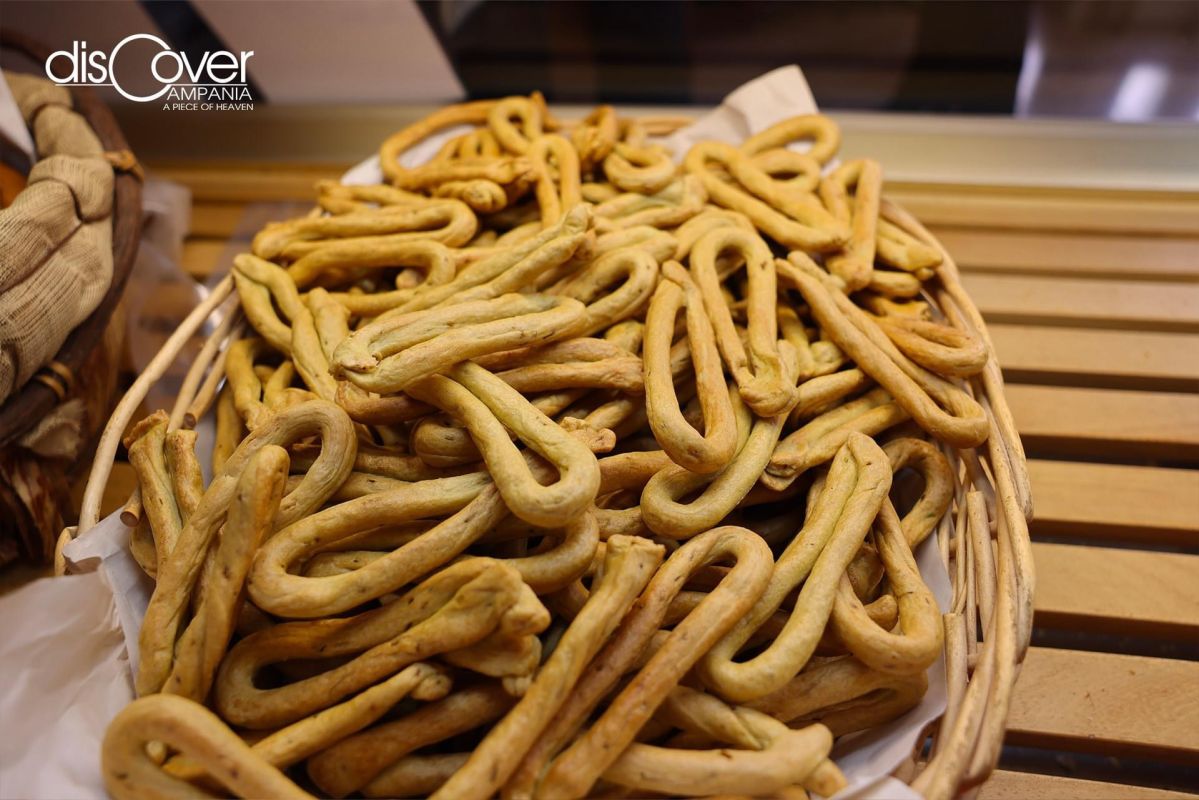Originally it was a recycled product, in an era in which we could not afford to waste even a gram of food, including humble ingredients such as flour and yeast.
Both essential for bread making. And it is precisely in the bakeries, between the seventeenth and eighteenth centuries, where the new production began, destined to become over time a typical Neapolitan specialty, appreciated by foreigners no less than by Neapolitans: tarallo 'nzogna e pepe. Yes, because what transformed it into a savory delicacy was the addition of other particularly delicious ingredients, namely suet and pepper.
It all began, therefore, with the recovery of the so-called scrap, according to the definition given by Matilde Serao in her famous "Ventre di Napoli", i.e. the pieces of dough left over from the processing of leavened dough for bread. Strips of pasta which, instead of being thrown away, were kneaded again with the addition of suet and pepper and intertwined to form rings. Cooking in the oven at very high temperatures transformed them into taralli, as they were called, which, being particularly caloric and nutritious but costing very little, soon entered the diet of the poor, unable to obtain bread. And at that time, in Naples, there were many of them.
The taralli also became a tavern food. The far from symbolic presence of pepper, in fact, encouraged the consumption of wine by customers. And again for this purpose, in the 19th century, another ingredient arrived that has since been indispensable in the recipe for Neapolitan tarallo: almonds. Present both chopped in the dough and, whole and shelled, as a garnish. And as well as in the taverns, where they were ideal companions for wine, they began to be sold on the streets, to be consumed preferably soaked and softened in sea water.
Among the classic scenes of popular Naples between the 19th and 20th centuries, there is that of the tarallaro with the bag full of tasty taralli freshly out of the oven on his shoulders, presented with the classic shouted call; “Taralle cavure”, hot taralli. Golden pasta rings, to justify various hypotheses and versions regarding the etymology of the word "tarallo": from the Greek "doratos", a sort of bread; from the Latin “torrere”, to toast” or from the French “toral”, dryer. A story, animated by generations of men, which ended with the only one of them whose name is preserved, who was also the last: Fortunato Bisaccia 'o tarallaro, who still wandered around the city center until the 80s, inspiration for the song “Fortunato” by PinoDaniele.
However, the kiosks dedicated to sales that arose between the end of the 19th century and the beginning of the 20th century on the Neapolitan seafront, especially in the Mergellina area, have resisted time and fashion. Ante litteramwalking snacks, also appreciated by foreigners. Over time, excluding soaking in sea water, the classic tarallo has gradually been re-proposed in other versions, including those with broccoli and tomato.
Scauratielli




Comments powered by CComment